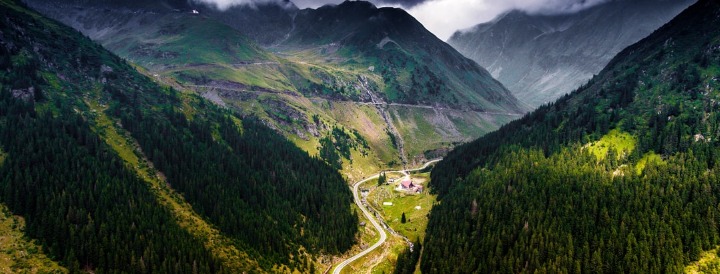2025 Romania Visitors Guide
Travel in Romania is as rewarding as it is challenging. The country’s mountain scenery and great diversity of wildlife, its cultures, and people, and a way of life that at times seems out of the last century to leave few who visit unaffected. However, although not as impoverished as Albania and most of the countries of the former Soviet Union, it is still one of the hardest countries of Eastern and Central Europe to travel in.
The regime of Nicolae Ceausescu drove the country to the brink of bankruptcy, and Ion Iliescu’s efforts to provide tangible fruit of 1989’s revolution further disrupted the economy; as a consequence, Email Constantinescu’s government had to embark on a savage austerity program which has led to big cuts in real earnings.
Coming here on a package deal – to the Black Sea or Poiana Brasov, or on a “Dracula Tour” – will effectively shield you from such realities. Traveling independently will have its frustrating moments, balancing inclinations and plans against practicalities. However, it would be a shame to let such factors deter you from at least a brief independent foray. Much of Romania’s charm lies in the remoter, less-visited regions, and it’s the experience of getting there that really gives you an insight into the country. Rather than expecting an easy ride, try to accept whatever happens as an adventure – encounters with Gypsies, wild bears, oafish officials, and assorted odd characters are likely to be far more interesting than anything purveyed by the tourist board.
Romanians (the country’s largest ethnic group) trace their ancestry back to the Romans and have a noticeable Latin character. They are generally warm, spontaneous, anarchic, and appreciative of style and life’s pleasures – sadly, in contrast to the austerity with which they’re saddled. In addition to ethnic Romanians, one and a half million Magyars pursue a traditional lifestyle long since vanished in Hungary while dwindling churches their ancestors built in the Middle Ages to guard the mountain passes. Along the coast, in the Delta, and in the Banat there’s a rich mixture of Russians, Ukrainians, Serbs, Slovaks, Bulgars, Gypsies, Turks, and Tatars.
Bucharest
Bucharest has lost much of its charm – its wide nineteenth-century Parisian-style boulevards are choked with traffic, once-grand fin-de-siécle buildings are crumbling and the suburbs are dominated by grim apartment blocks – but it remains the center of the country’s commercial and cultural life. Many of Romania’s other cities are blighted by industry and best avoided, but Brasov, Sibiu, Cluj, Oradea, and other historic towns still show glimpses of past glories. To the north and west of the country, Transylvania and Banat are the provinces that are most western in feel and allow the easiest traveling, with private hotels, buses, and taxis, and information more readily available. Coming from the capital, Brasov is the gateway to Transylvania; just twelve kilometers from the ski resort of Poiana Brasov, its medieval old town is a good introduction to the Saxon architecture of the region, which reaches its peak in the fortified town of Sibiu and the jagged skyline of Sighisoara. Further north and west, the great Magyar cities of Targu Mures, Cluj, and Oradea have retained a wealth of medieval churches and streets, as well as impressive Baroque and Secession edifices. All these cities are served by international trains from Budapest, and any could be your first taste of Romania if you’re arriving overland.
The best of Romania, though, is its countryside, and in particular the mountain scenery. The wild Carpathians, forming the frontier between the province of Transylvania and, to the east and south, Moldavia and Wallachia, shelter bears, stags, chamois, and eagles; while the Bucegi, Fagaras, and Retezat ranges and the Padis plateau offer some of the most undisturbed and spectacular hiking opportunities in Europe.
Danube Delta
In contrast to the crowded Black Sea beaches along Romania’s east coast, the waterlogged Danube Delta is a place set apart from the rest of the country where life has hardly changed for centuries and where boats are the only way to reach many settlements. During spring and autumn, especially, hundreds of species of birds from all over the Old World migrate through this region or come to breed.
Few countries can offer such a wealth of distinctive folk music, festivals, and customs, all still going strong in remote areas like Maramures and the largely Hungarian Csango and Szekelyfold regions. Almost any exploration of the villages of rural Romania will be rewarding, with sights as diverse as the log houses in Oltenia, Delta villages built of reeds, watermills built entirely of wood in Maramures, and above all the country’s abundance of churches, which reflect a history of competing communities and faiths.
Religious Architecture
In medieval Transylvania four religions (Roman Catholic, Reformat, Lutheran and Unitarian) and three “nations” (Saxon, Hungarian, and Székely) were recognized, a situation stigmatized as the “Seven Deadly Sins of Transylvania” as the Romanian majority and their Orthodox were excluded. In Moldavia and Wallachia Orthodoxy had a monopoly, but the clergy was as likely to be Greek as Romanian, and as late as the nineteenth century held services in incomprehensible Slavonic rather than the native tongue. This religious mix, together with the frequency of invasions, accounts for Romania’s extraordinary diversity of religious architecture.
In Moldavia and Wallachia, masons and architects absorbed the Byzantine style and then ran riot with ornamental stone facades, most notably at the monastery of Curtea de Arges and Iasi’s Three Hierarchs church, and in Oltenia, where the “Brancovenau style” flourished, with its porticoes and stone carving derived from native woodwork motifs. The frescoes so characteristic of medieval Orthodox churches reached their ultimate sophistication on the exterior walls of the Painted Monasteries of Bucovina, in northern Moldavia, which are recognized as some of Europe’s greatest artistic treasures. Fine frescoes are also found inside the wooden churches of Maramures, with their sky-scraping Gothic steeples.
What to visit in Romania
Romania is placed on the Balkan Peninsula. This country is also known as being a place of contrast, homing different kinds of beautiful attractions given by nature. Here, tourists will have the opportunity to visit the Black Sea, but can also enjoy the beautiful mountains, including the Retezat Mountains and the Carpathian Mountains. However, probably the main attraction in this country is the vampire Dracula and its famous castle. Even if it’s not a very famous destination in Europe, Romania is one of those countries that home some of the most natural and beautiful attractions in the world. Here are three beautiful attractions to visit in Romania.
Sighisoara
Sighisoara is placed in Transylvania and it probably is one of the best places to visit in Romania. These beautiful location homes one of the most attractive and well-preserved wall towns in this country. During the 12th century, German merchants and craftsmen were invited to Sighisoara by the King of Hungary to defend the frontier. They seemed to like this place, as later they settled here. Moreover, they managed to develop a beautiful trading town and the citadel, which can be seen in the present. However, the most famous attraction in Sighisoara is The Clock Tower, built in 1556 and featuring 64-meter height.
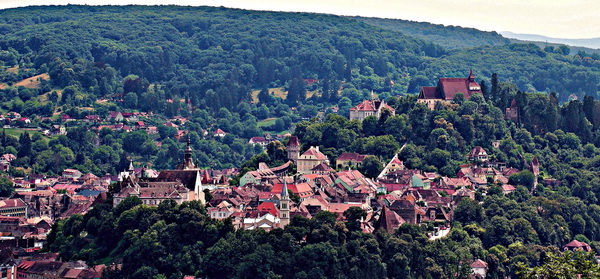
Mamaia
Mamaia can be found on the Black Sea, is known as the most famous and popular seaside resort in Romania. This beautiful resort measures approximately 8 km long and features several white-sand beaches. Moreover, tourists can try out the water park that is placed on this seaside resort.
Sinaia
Sinaia is known as a beautiful mountain resort town that is visited by hundreds of tourists every month. Here tourists can find a monastery that contains a copy of the first Bible printed in Romania. Moreover, here can also be found Peles Castle, a structure that King Charles I built as a summer house.
Romania Transportation
Major Romanian towns, and a huge number of small towns and villages, are most easily reached by train. The system, although more confusing than in Western Europe, is far more user-friendly than the bus network, which is best used for reaching local villages around the main towns.
Trains
The 11,300-kilometre network of the SNCFR ( Societatea Nationala a Cailor Ferate Române , still generally known as the CFR or ChéFéRé ) covers most of the country. Tickets are amazingly cheap, which is not necessarily to…
Planes
TAROM ‘s domestic services depart most days from Bucharest to Arad, Baia Mare, Cluj, Constanta, Iasi, Oradea, Satu Mare, Sibiu, Suceava, Timisoara and Târgu Mures. Most flights use Bucharest’s Baneasa airport, but flights to Constanta and those…
Buses and taxis
Bus services almost dried up before 1989 due to fuel shortages; they recovered the following decade, but in the last few years have virtually evaporated again in some regions due to economic recession. In some parts of the country they have been…
Boats
NAVROM , the national shipping company, maintains a small fleet of passenger boats which operate principally along the arms of the Danube Delta . These vary greatly with the season, only operating on alternate days in winter, and you can’t…
Driving
Given the radical cuts to train and bus services, you may prefer to drive; there are no queues for fuel now, and main roads ( Drum National or DN) are in a reasonable state, although county roads ( Drum Judetean ) are poor and local…
Cycling
Given the mountainous terrain and the poor state of many roads, you’ll need to be fit and self-reliant to cycle around Romania. Bike stores are few and far between, although most village mechanics can manage basic repairs. You’re strongly…
Hitchhiking
Hitchhiking ( autostop or occasie ) is an integral part of the Romanian transport system to supplement patchy or nonexistent services on backroads. It’s common even on the autostrada, although illegal there, and…
Tours of Romania
Between mid-June and the end of September, ONT organizes tours , including weekends at Sinaia, Predeal and the seaside; two- or three-day excursions to Maramures, the old Wallachian capitals, the monasteries of Bucovina, the Delta, and the Prahova and Olt valleys; and jaunts around the country lasting 3, 5 or 7 days.
The three-day tour takes in Curtea de Arges, Cozia Monastery, Sibiu, Sibiel, Brasov and Sinaia; five-day excursions add Bran Castle, Tārgu Mures, Sighisoara and Sovata to this list; while the week-long itinerary also includes Alba Iulia, Cluj, Bistrita, Bicaz, and several of the Moldavian monasteries. Prices depend on the number of participants and on the types of transport and accommodation required, but as an example, three people spending three days touring the Bucovina monasteries by car would pay $224 each plus either $27 by sleeper train or $88 by air from Bucharest to Suceava and back; it will always be cheaper to make your own way to Suceava and book a tour there, with the possibility of latching on to a bus party.
ONT has also recently introduced a wonderfully kitsch “Live like a Dictator” package, costing $3000 a day and using Ceausescu’s villas and cars.
Weather in Romania
| Month | The Banat | Bucharest | The coast | The mountains |
|---|---|---|---|---|
| January | -2 (28) | -3 (26) | -1 (31) | 1 (34) |
| February | 1 (34) | -1 (31) | 1 (34) | 1 (34) |
| March | 5 (41) | 4 (40) | 3 (39) | 6 (42) |
| April | 11 (52) | 11 (52) | 13 (55) | 11 (52) |
| May | 16 (61) | 17 (62) | 19 (66) | 16 (61) |
| June | 20 (67) | 21 (69) | 24 (75) | 19 (66) |
| July | 20 (67) | 23 (71) | 26 (79) | 21 (69) |
| August | 18 (65) | 22 (70) | 26 (79) | 21 (69) |
| September | 18 (65) | 18 (65) | 22 (70) | 18 (65) |
| October | 12 (53) | 12 (53) | 17 (62) | 13 (55) |
| November | 6 (43) | 5 (41) | 11 (52) | 7 (45) |
| December | 1 (34) | 1 (34) | 6 (43) | 2 (36) |
These are average temperatures – they can rise or fall 5°C (10°F) at midday or nightfall. Spring is short and changeable; brief showers or thunderstorms are common in the Carpathian during summer, whereas the Banat and Wallachian lowlands are prone to drought. In winter a strong, icy wind (the crivat ) sweeps down from Russia and snow blankets most of Romania.
Chalet Hovel – Amazing Retreat in Romania
If you’re still searching for breathtaking views and wonderful places to spend your spring break in? Here we have another suggestion for you and it comes all the way from Romania. Discover this amazing retreat in the mountains and refresh your life with a spring break deliciously spent in nature.
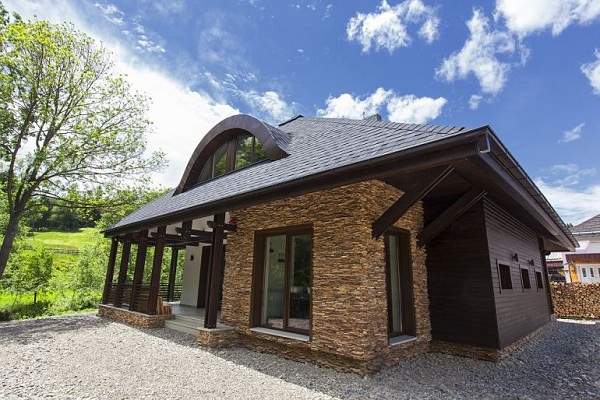
We really enjoyed discovering this nice retreat in the mountains close to Humorului Monastery. You can observe in this amazing retreat the taste and attention for details wherein very few places around the world you can find. What is even nicer to know is that all the furniture and finishes are made in Romania, so you will truly feel authentic Romania here. We recommend the experience here as you will not end up in just another Western decorated hotel but in an authentic Romanian home.
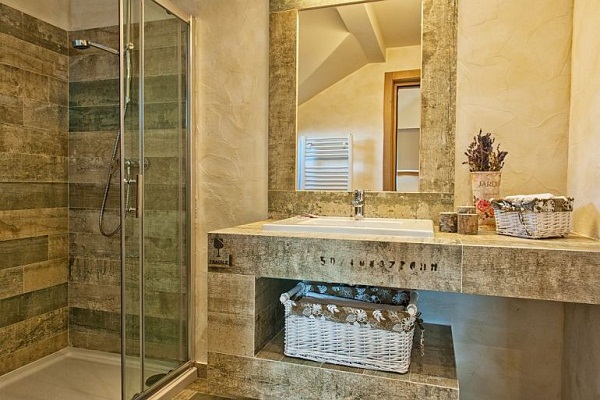
The two talented architects and owners of this amazing retreat in the East part of Romania have designed and built the entire structure with European funds. The two are a family, married and are very proud of their developing project, welcoming anyone who would like to taste a bit of Romania’s countryside and mountain delights.
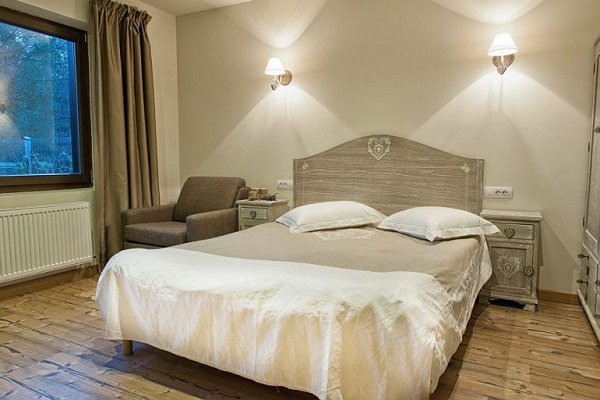
Where does the name come from? Well the name of this amazing retreat has an interesting story, at least. The owners, who are themselves passionate tourists and have been through Europe’s ski resorts, have decided to name the pension “chalet” as to signalize that foreign tourists are welcomed here with the entire comfort you could find in any modern hotel. “Havel” is an entire different story, representing actually the name of the street address you will find the retreat on “Maghernita”, translated into English.
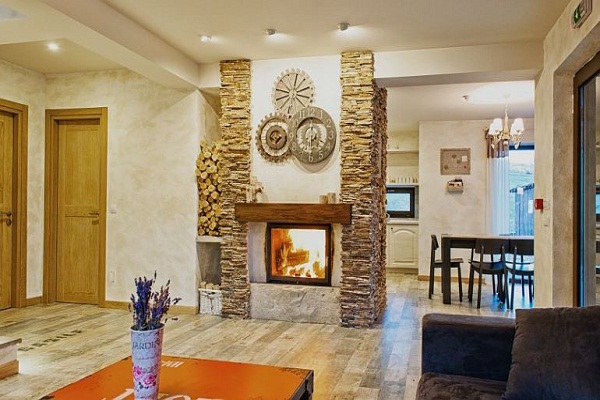
Check out the pictures to discover this amazing retreat in Romania, without even mentioning the fantastic views which surround it. Would you say “yes” to a spring break in Romania?
